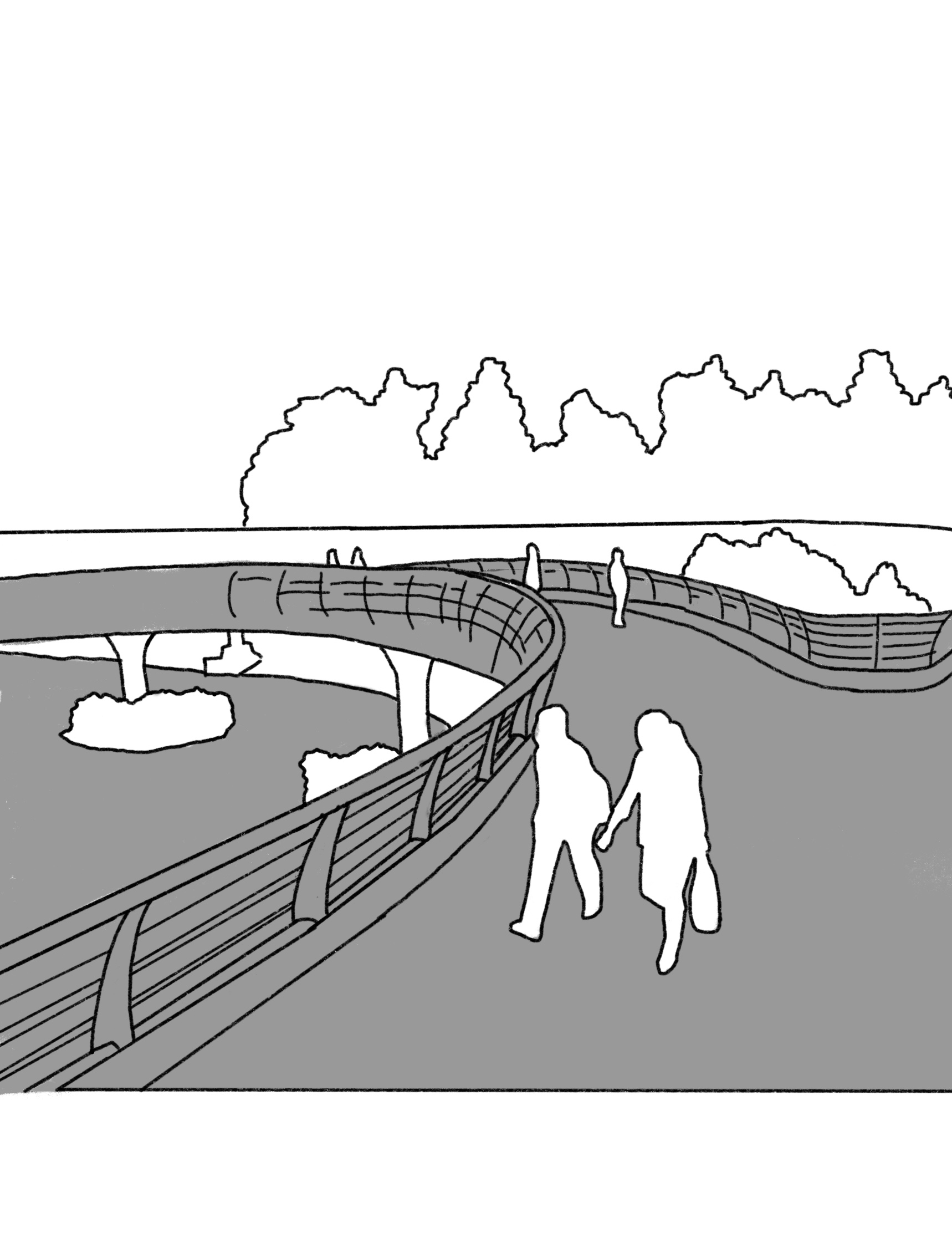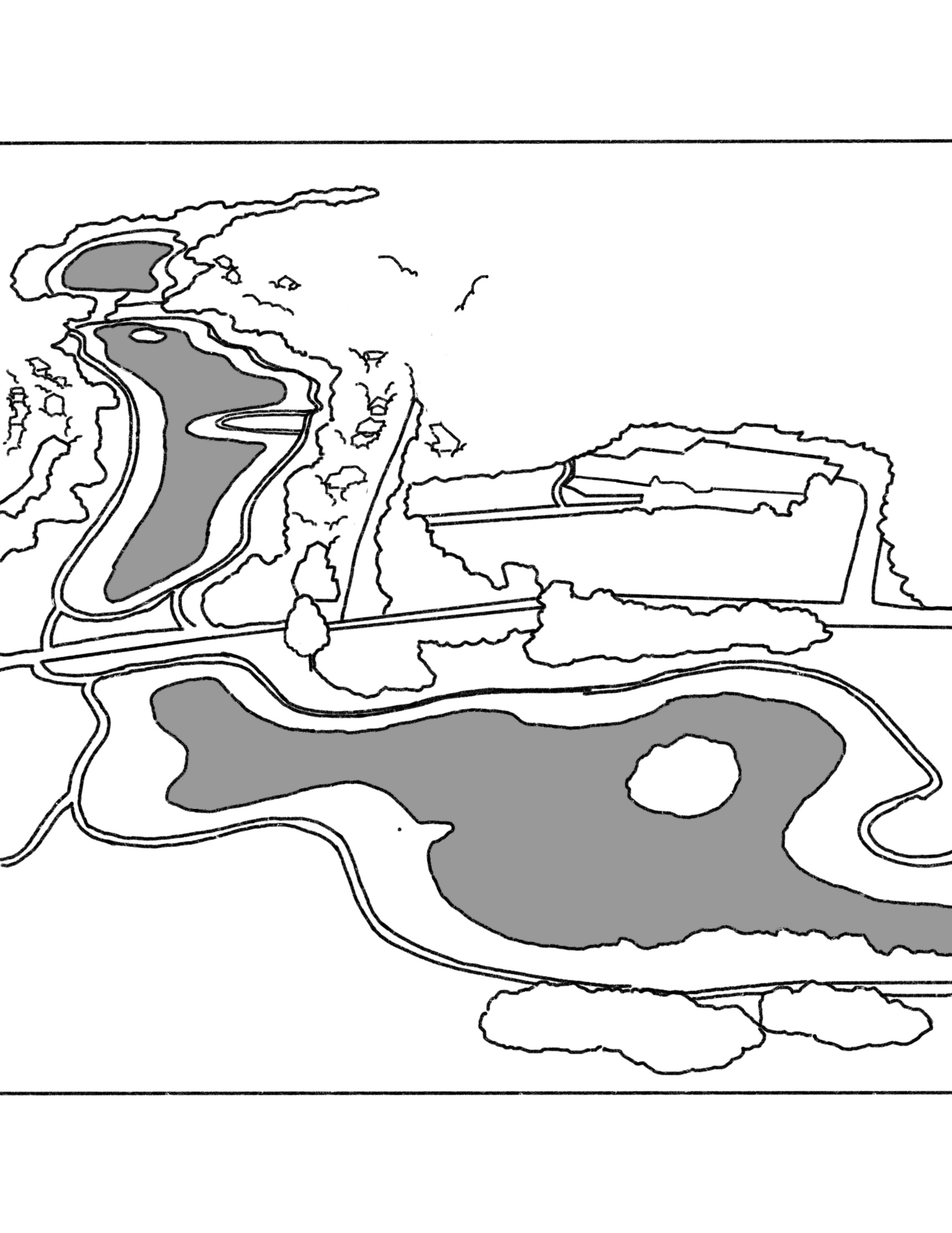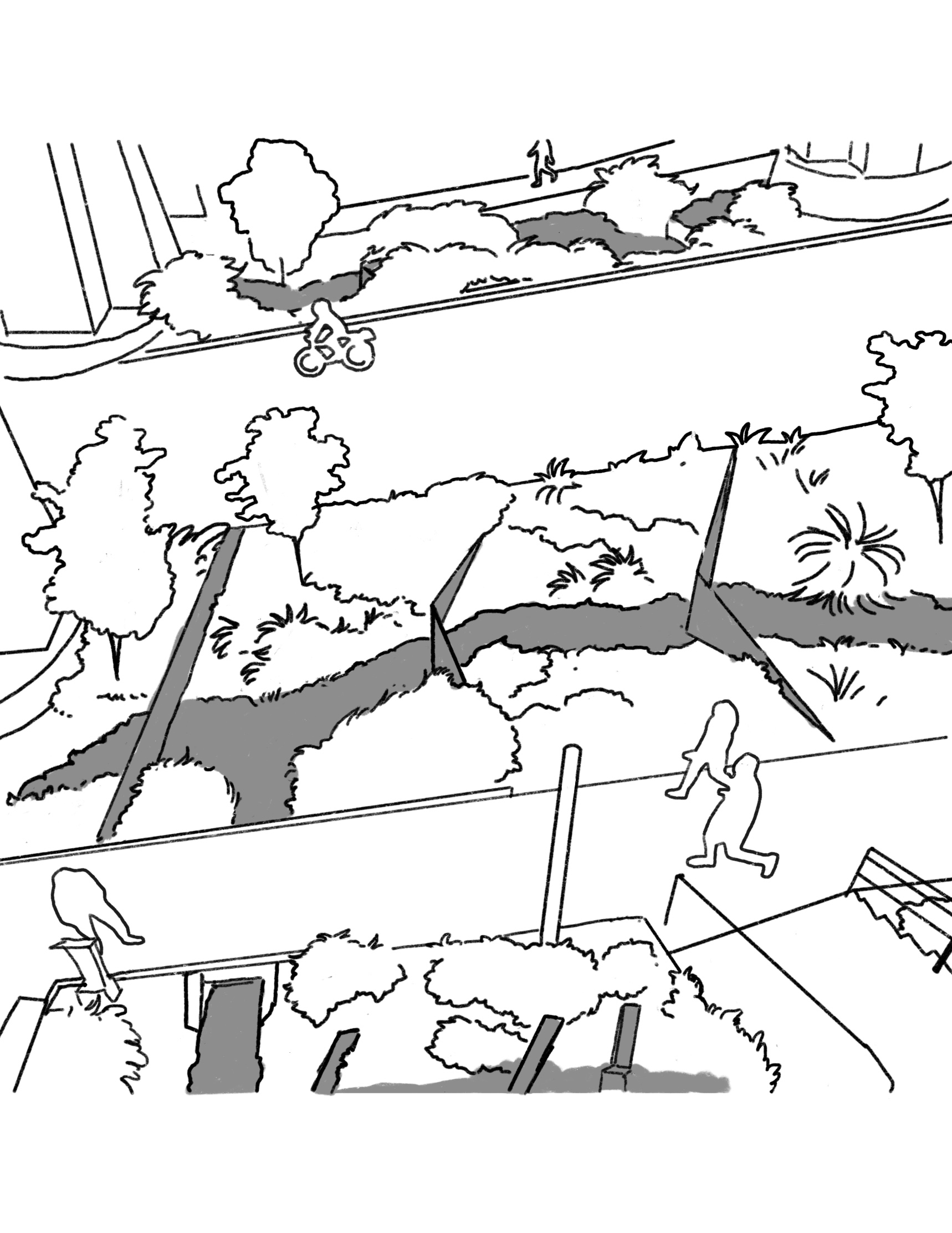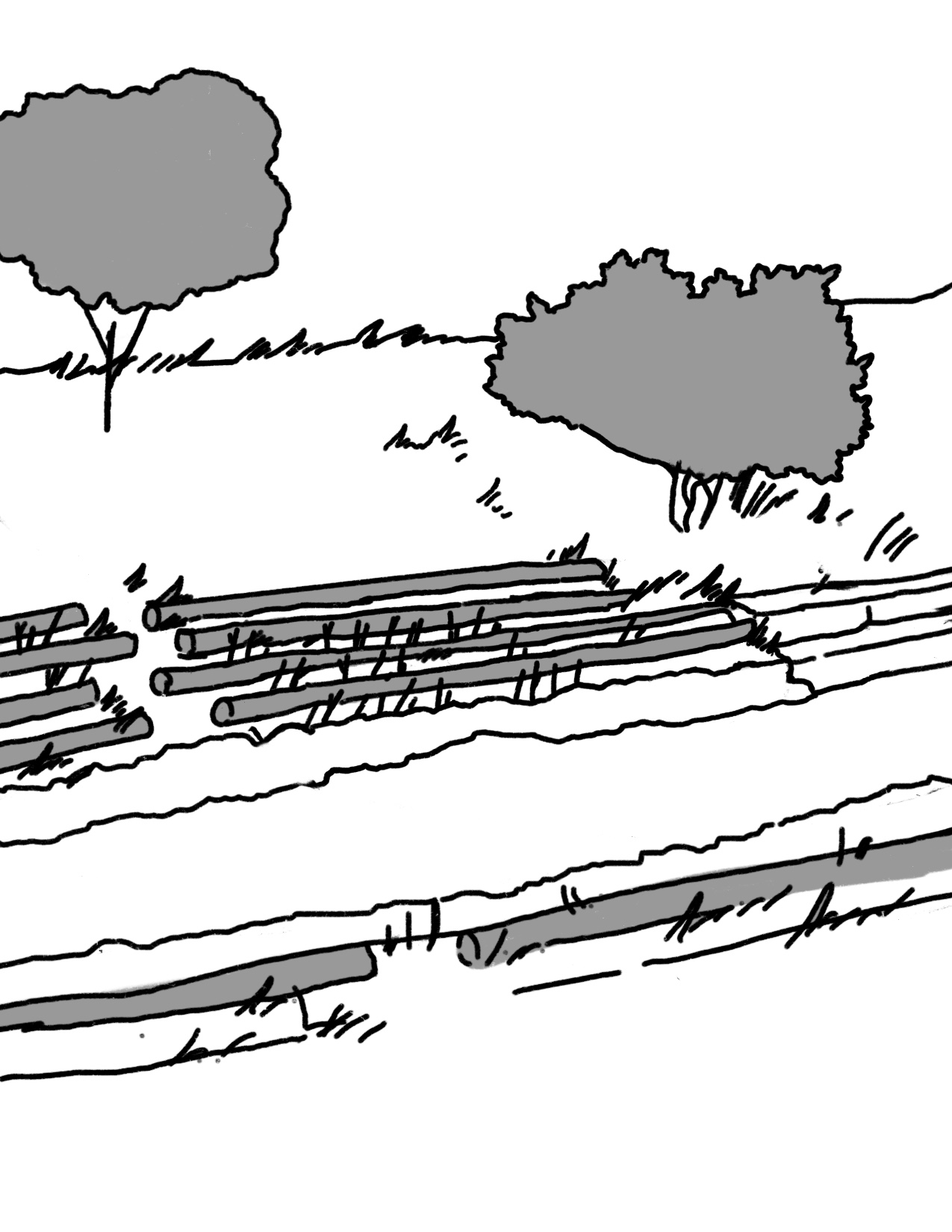Strategy
Adaptation
Limit Exposure to Flash Floods
In regions where warming temperatures and shifting air currents are causing heavy downpours, inland flooding can be held at bay by increasing a site's water detention with above-ground tanks, in-ground ponds, or below-ground trenches. Permeable paving can further improve on-site water absorption.
Move activities away from high-risk areas
Options
...by planning the removal or reduction of structures and people in flood zones (managed retreat).
...by locating structures in the site above the current 100- or 200- year flood level.
...by raising a portion of the site higher than the current 100- or 200-year flood level.
...by eliminating essential infrastructure or elements from low lying areas.
...by designing high clearance bridges far above projected flood levels to avoid strainers that catch debris and create extra pressure.
Case Study
As part of Turenscape’s design for Yanweizhou Park, a serpentine pedestrian bridge snakes across two seasonally flooded rivers. The main bridge is elevated above the 200-year flood level, while auxiliary ramps connecting to the riparian wetland park below can be submerged during periodic flood events.

Create obstacles to attenuate water speed, volume, and sediment flows
Options
...with speed humps, large softscape areas, bioswales, rain gardens, or other features that slow and spread water out.
...with floodplain benches that allow silt to deposit with the slowing and spreading of water.
...through detention (green roofs, temporary storage, tanks, detention ponds, cisterns, trenches) or retention (retention ponds, wet ponds) that attenuate the release of water to the storm sewer.
Case Study
SWA transformed a former golf course into a series of five retention ponds, designed to hold 100 million gallons of floodwater each. By keeping rain out of the local bayous during heavy precipitation events, Exploration Green acts as a natural sponge, helping to reduce the chances of catastrophic system failure. Even when partially complete, it helped save as many as 150 homes during Hurricane Harvey.

Reduce excess water
Options
...by exiting water off site as quickly as possible without burdening the storm sewer system (exiting the clean surface water of a park to a water body, etc.).
...by amending soil to increase its infiltration capacity.
...by exiting water via infiltration to avoid the storm sewer (stormwater wetlands, permeable pavement).
Case Study
As part of an effort to reduce the volume of polluted stormwater runoff entering nearby water bodies, Weber Thompson designed the Aurora Bridge Swales, a series of bio-retention cells that redirect, slow, and filter storm water from the north span of an overhead vehicular bridge.

Reduce excess sediment through erosion prevention
Options
Case Study
As part of MVVA’s redesign for Waterloo Greenway, a degraded urban creek, several streambank stabilization strategies were identified. Trees removed for the project were salvaged and buried at the toe of the channel. Live fascines, stakes, and other plant materials were used to further reduce soil erosion. In places where hard infrastructure was necessary, “kickback walls” were constructed from limestone blocks salvaged from the offcuts of a nearby quarry.
